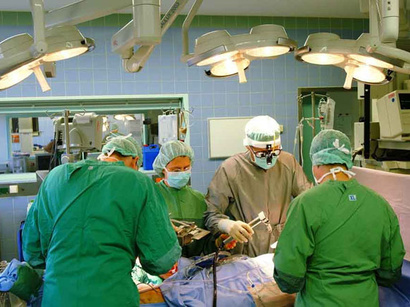Most of the reported�casualties are in Iran's western province of Kermanshah, nearby the epicenter of the earthquake. Search efforts are underway in the region, with rescue workers digging through rubble in an attempt to find any missing people.
The earthquake damaged the main hospital in the town of Sarpol-e Zahab that is being used to treat the thousands of wounded victims. In addition, it is estimated that 70,000 people in total will need some sort of shelter as a result of the earthquake's damage. Unfortunately, the damage was widespread given most of the homes in the Kurdish mountains are made from mud bricks and are not best suited to withstand an earthquake.
[caption id="attachment_874037470" align="aligncenter" width="960"]
 A picture taken on November 14, 2017, shows a view of the buildings left damaged by a 7.3-magnitude earthquake that struck two days before in the town of Sarpol-e Zahab in Iran's western Kermanshah province near the border with Iraq, leaving hundreds killed and thousands homeless. / AFP PHOTO / ATTA KENARE (Photo credit should read ATTA KENARE/AFP/Getty Images)[/caption]
A picture taken on November 14, 2017, shows a view of the buildings left damaged by a 7.3-magnitude earthquake that struck two days before in the town of Sarpol-e Zahab in Iran's western Kermanshah province near the border with Iraq, leaving hundreds killed and thousands homeless. / AFP PHOTO / ATTA KENARE (Photo credit should read ATTA KENARE/AFP/Getty Images)[/caption]The earthquake triggered multiple major landslides�as a result of the shaking, making rescue efforts more difficult in the mountainous region. In addition, many people were forced to sleep outside or in incomplete buildings as nighttime temperatures dropped below freezing.
The Iran-Iraq Earthquake Geologic Setting�
The earthquake on the border of Iran-Iraq struck in a populated region where more than 1.8 million people live.�The earthquake struck the border region�at 9:18 pm local time 30 km southwest of Halabja and nearby the border between Iran and Iraq.
The earthquake focus was fairly shallow at�11.8 miles below the surface of the Earth. The earthquake was a result of the collision of the Arabian and Eurasian plates.
[caption id="attachment_4652" align="aligncenter" width="410"]
 Tectonic setting of the Iran-Iraq earthquake showing the Arabian and Eurasian plate collision.[/caption]
Tectonic setting of the Iran-Iraq earthquake showing the Arabian and Eurasian plate collision.[/caption]Johnson and Stern, 2010
The Arabian plate is moving northward by a few centimeters per year, colliding into the Eurasian plate and producing the beautiful Zagros Mountains. This collision between two continental plates switches from a subduction to a strike-slip setting depending on specific location. In the region where the earthquake took place, the two plates are sliding against one another.
The compressional forces and friction induced from the two plates rubbing against one another have caused several major earthquakes in the region. This specific earthquake was a result of a reverse fault, where rocks are compressed and thrust up above nearby rocks. This fold and thrust belt, which has formed the Zagros Mountains, triggered a M7.8 earthquake in 1978 which killed at least 15,000 people.
Further to the south where the boundary between the plates is a subduction has experienced major earthquakes and tsunamis. In 1945 a magnitude 8.0 earthquake produced a tsunami that combined killed more than 4,000 people.
[caption id="attachment_4659" align="aligncenter" width="464"]
 Iranians salvage items from damaged buildings in the town of Sarpol-e Zahab in the western Kermanshah province near the border with Iraq, on November 14, 2017, following a 7.3-magnitude earthquake that left hundreds killed and thousands homeless two days before.[/caption]
Iranians salvage items from damaged buildings in the town of Sarpol-e Zahab in the western Kermanshah province near the border with Iraq, on November 14, 2017, following a 7.3-magnitude earthquake that left hundreds killed and thousands homeless two days before.[/caption]ATTA KENARE/AFP/Getty Images
The recent Iran-Iraq earthquake was felt as far away as Turkey, Israel, and Kuwait. While the death toll continues to rise, it is already the deadliest earthquake in the world in 2017 and the deadliest to strike Iran since 2012. Unfortunately, earthquakes will continue to occur in this region as the Arabian plate continues to push up against the Eurasian plate. Hopefully, preparation is underway to learn from this tragic event and rebuild stronger and better than before.










